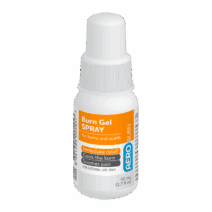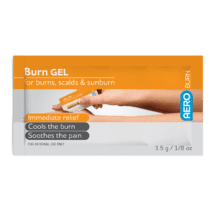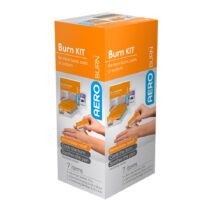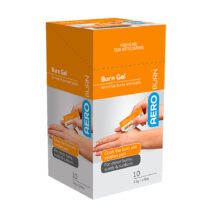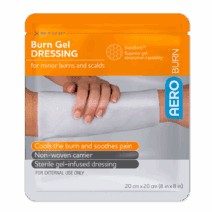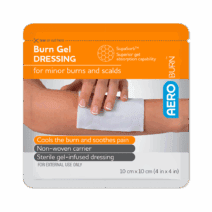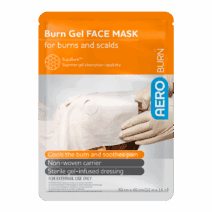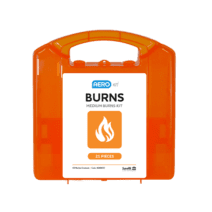About Burn Kits
Burn kits are a specific type of first aid kit designed to treat minor burns and scalds. They contain a range of specialised products that help with the immediate and ongoing management of burns, such as cooling aids and bandages. Commonly found in areas where burns are either a life-threatening or highly probable risk, burn kits can be an invaluable piece of equipment in kitchens, manufacturing plants and construction sites.
What are burn kits?
Burn kits are a type of first aid kit designed to treat and manage minor burns or scalds. They contain different contents than a regular first aid kit, such as burn gels. Burn kits often include:
- Burn gels
- Coverings
- Bandages
- Safety shears
- Microporous tape
- Foil blankets
- Gloves
A requirement for burn kits may vary from industry to industry, which will depend on the level of burn risk involved and the severity. For example, catering and hospitality staff are more likely to experience a burn or scald compared to office workers, meaning they may need a burn kit to manage health and safety requirements.
Why are burn kits important?
Burn kits are important because they help with the immediate treatment of minor burns or scalds. They can assist with soothing gels that offer pain relief, as well as bandages that offer a burn the opportunity to heal, with a lowered risk of infection.
As burns can often cause shock or hyperthermia, burn kits also contain items that can help with the treatment of this. Gloves ensure safety and protection for both the casualty and the first aider. By using a burn kit, you can help minimise the risk of infection that a burn can cause.
Legal requirements for burn kits
At the time of writing, there is no specific law surrounding burn kits, their contents or their availability in the workplace. However, you may be caught out if you don’t have one in your place of work.
According to the Health and Safety (First Aid) Regulations 1981, all employers must provide access to adequate and appropriate equipment within their workplace, as outlined by their risk assessment. If you have identified there’s a risk of burns or scalds to your employees, but have not provided adequate products to protect workers, you may be at fault if they are taken ill. Places such as kitchens, catering environments and laboratories or those with regular exposure to hot liquids and open flames, should consider a burn kit.
Where should burn kits be located?
If you choose to have a burn kit, it should be within easy reach of any staff member, and not posing any risks or hazards. For example, in a kitchen, a burn kit is often found near a sink, as staff members know to put burns under cool water before treating them. You would also need to avoid storing a burn kit on the floor or in a place where it could cause obstruction.
Who needs burn kits?
Burn kits are needed by workplaces and places of education where the risk of burns and scalds is much higher. Other places that may need burn kits include:
- Areas with open fires, such as hotels and pubs
- Mobile catering units
- Hospitality units
- Areas where fireworks may be let off
- Scientific research centres
Emergency service personnel will also often have specialised burn kits that contain a vast range of equipment designed to treat life-threatening burns. A regular burn kit designed for the workplace will only cover minor burns, so more serious burns will require expert medical treatment.
Maintenance of a burn kit
Burn kits require regular checks to ensure all products contained are up-to-date and that the packaging isn’t damaged. Individual elements of burn kits, such as gels, may need replacing sooner than other parts due to the type of product they are and their expiration date.
Summary
Burn kits provide a useful and specialised approach to first aid, giving workplaces with a high risk of burns or scalds the ability to treat someone who has been affected.

